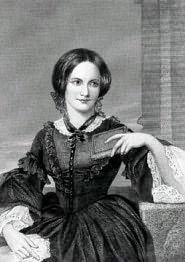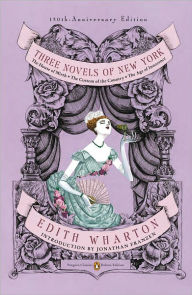Charlotte Brontë was born on April 21, 1816, in Thornton, Yorkshire, in the north of England, the third child of the Reverend Patrick Brontë and Maria Branwell Brontë. In 1820 the family moved to neighboring Haworth, where Reverend Brontë was offered a lifetime curacy. The following year Mrs. Brontë died of cancer, and her sister, Elizabeth Branwell, moved in to help raise the six children. The four eldest sisters -- Charlotte, Emily, Maria, and Elizabeth -- attended Cowan Bridge School, until Maria and Elizabeth contracted what was probably tuberculosis and died within months of each other, at which point Charlotte and Emily returned home. The four remaining siblings -- Charlotte, Branwell, Emily, and Anne -- played on the Yorkshire moors and dreamed up fanciful, fabled worlds, creating a constant stream of tales, such as the Young Men plays (1826) and Our Fellows (1827).
Reverend Brontë kept his children abreast of current events; among these were the 1829 parliamentary debates centering on the Catholic Question, in which the Duke of Wellington was a leading voice. Charlotte's awareness of politics filtered into her fictional creations, as in the siblings' saga The Islanders (1827), about an imaginary world peopled with the Brontë children's real-life heroes, in which Wellington plays a central role as Charlotte's chosen character.
Throughout her childhood, Charlotte had access to the circulating library at the nearby town of Keighley. She knew the Bible and read the works of Shakespeare, George Gordon, Lord Byron, and Sir Walter Scott, and she particularly admired William Wordsworth and Robert Southey. In 1831 and 1832, Charlotte attended Miss Wooler's school at Roe Head, and she returned there as a teacher from 1835 to 1838. After working for a couple of years as a governess, Charlotte, with her sister Emily, traveled to Brussels to study, with the goal of opening their own school, but this dream did not materialize once she returned to Haworth in 1844.
In 1846 the sisters published their collected poems under the pen names Currer (Charlotte), Ellis (Emily), and Acton (Anne) Bell. That same year Charlotte finished her first novel, The Professor, but it was not accepted for publication.
However, she began work on Jane Eyre, which was published in 1847 and met with instant success. Though some critics saw impropriety in the core of the story -- the relationship between a middle-aged man and the young, naive governess who works for him -- most reviewers praised the novel, helping to ensure its popularity. One of Charlotte's literary heroes, William Makepeace Thackeray, wrote her a letter to express his enjoyment of the novel and to praise her writing style, as did the influential literary critic G. H. Lewes.
Following the deaths of Branwell and Emily Brontë in 1848 and Anne in 1849, Charlotte made trips to London, where she began to move in literary circles that included such luminaries as Thackeray, whom she met for the first time in 1849; his daughter described Brontë as "a tiny, delicate, serious, little lady." In 1850 she met the noted British writer Elizabeth Gaskell, with whom she formed a lasting friendship and who, at the request of Reverend Brontë, later became her biographer. Charlotte's novel Villette was published in 1853.
In 1854 Charlotte married Arthur Bell Nicholls, a curate at Haworth who worked with her father. Less than a year later, however, she fell seriously ill, perhaps with tuberculosis, and she died on March 31, 1855. At the time of her death, Charlotte Brontë was a celebrated author. The 1857 publication of her first novel, The Professor, and of Gaskell's biography of her life only heightened her renown.
Author biography from the Barnes & Noble Classics edition of Jane Eyre.
















